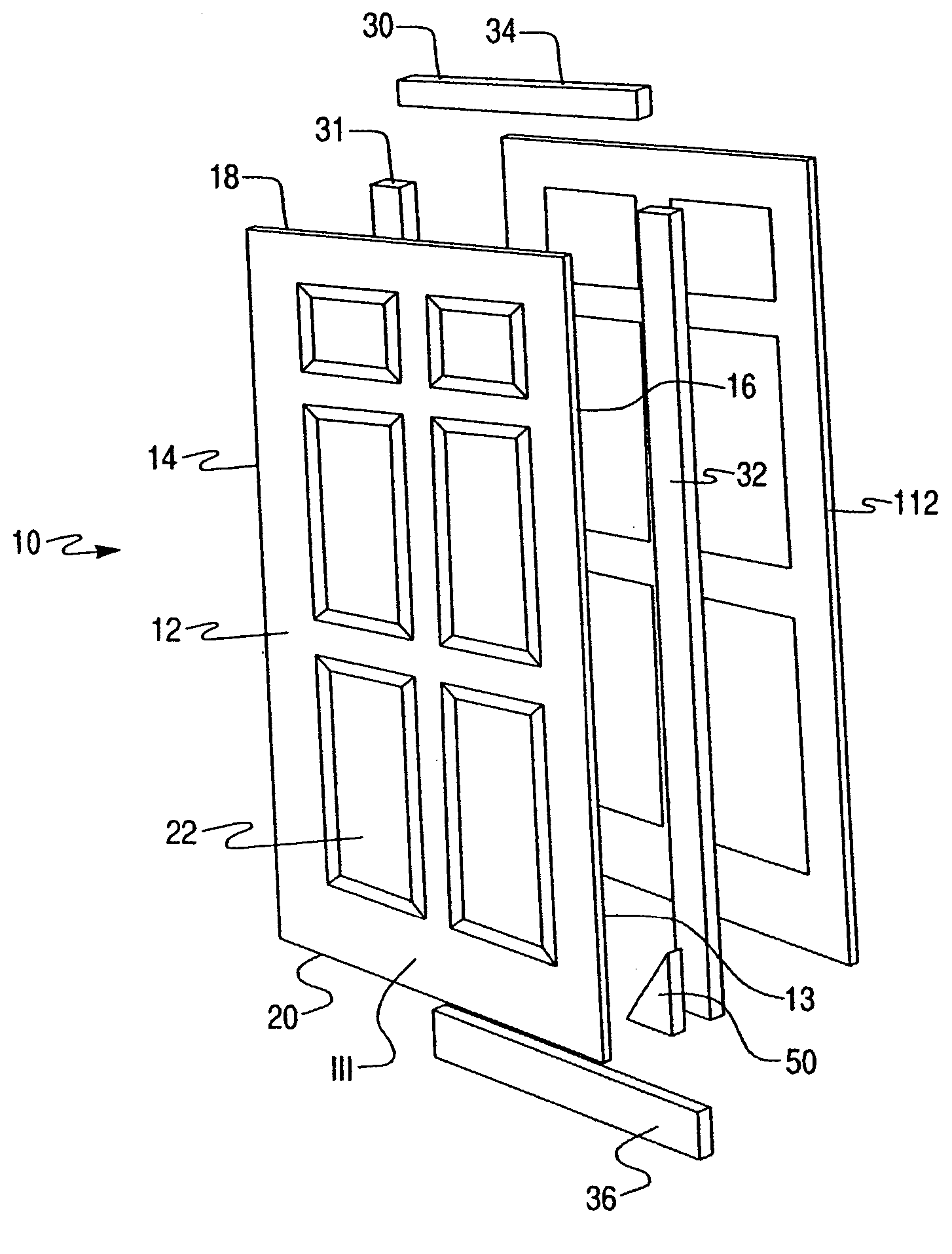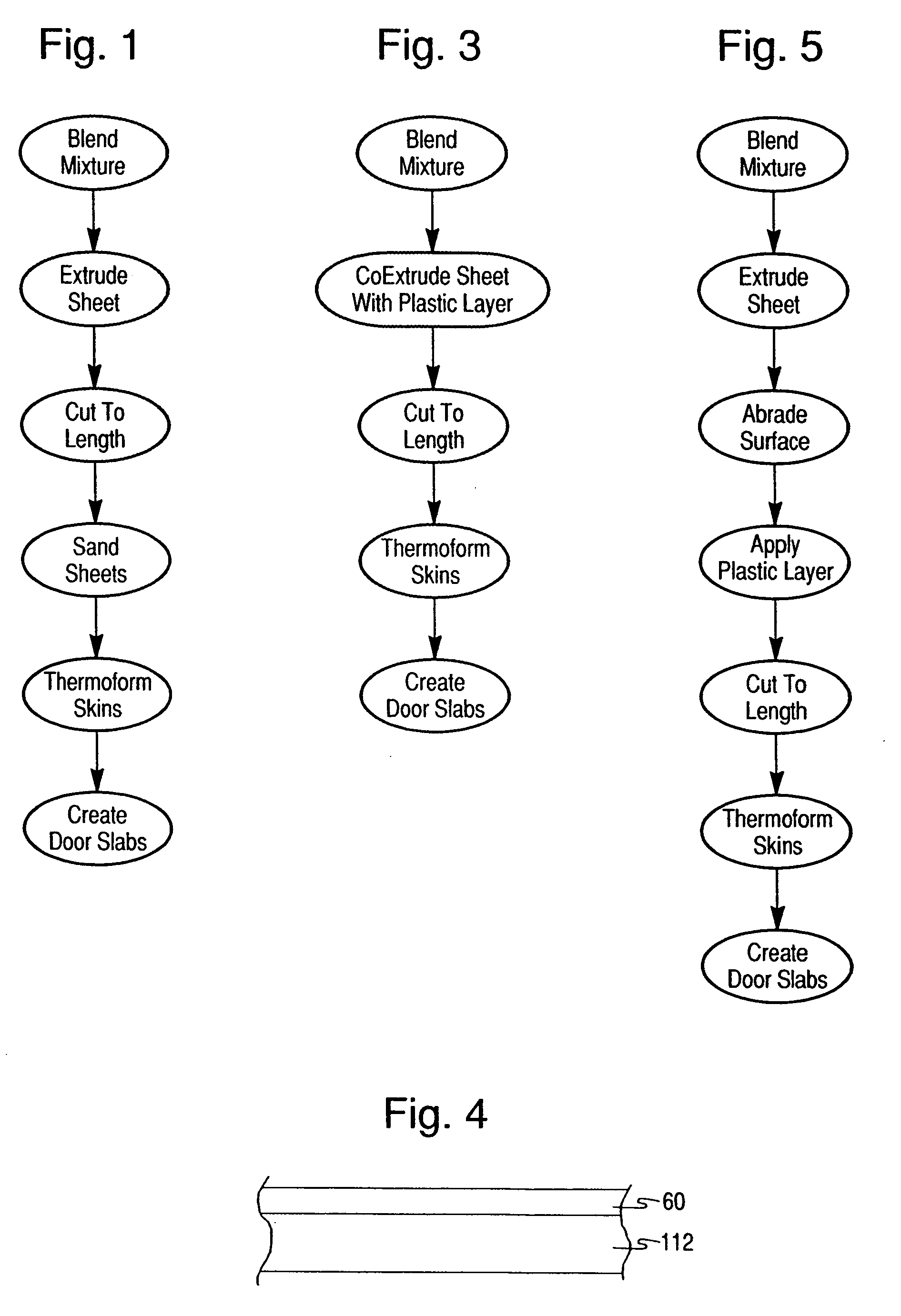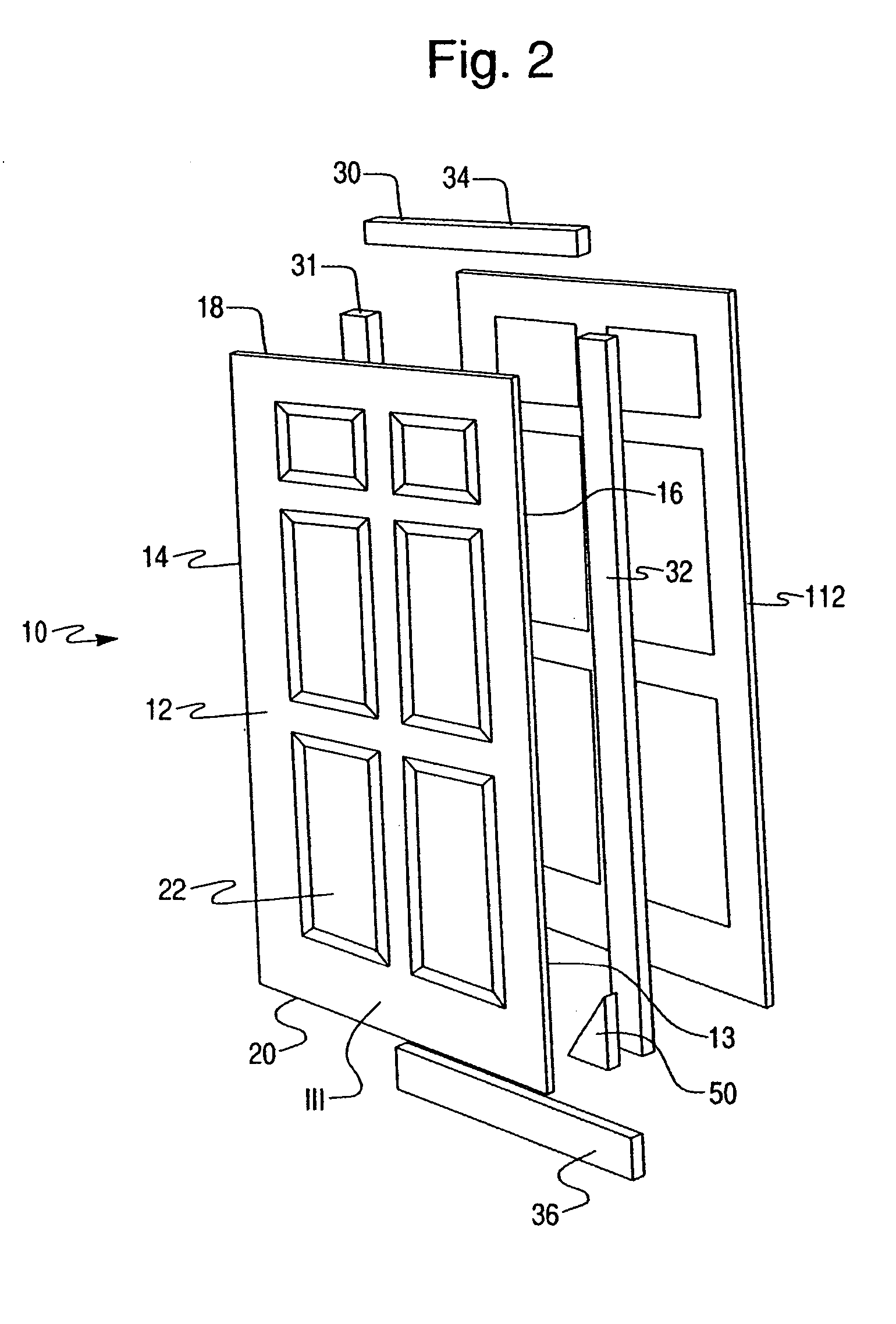Composite door structure and method of forming a composite door structure
a composite door and door frame technology, applied in the field of composite door structure, can solve the problems of high initial start up cost associated with producing a steel door, wood doors can warp and rot, and the elements require frequent maintenance, so as to reduce the risk of cracking and other forms of deterioration, and the effect of stable respons
- Summary
- Abstract
- Description
- Claims
- Application Information
AI Technical Summary
Benefits of technology
Problems solved by technology
Method used
Image
Examples
Embodiment Construction
[0033]FIG. 1 shows the method of forming a door in accordance with the present invention. The method involves mixing together a thermoplastic polymer with an organic fibrous material in a ratio such that the organic fibrous material constitutes 40-60% by weight of the mixture. The organic fibrous material is preferably relatively small particles of pine that have passed through a sieve. For example, an 80 mesh sieve may be used. The present invention is not limited to the use of an 80 mesh sieve; rather, other sizes both larger and smaller are considered to be well within the scope of the present invention. The present invention, however, is not limited to the use of pine; rather, it is contemplated that various types of wood dust including but not limited to oak, cherry, maple and combinations of the same or other woods may be used. It is further contemplated that the use organic fibrous material may contain a blend of wood particles, provided that all of the particles have been pa...
PUM
| Property | Measurement | Unit |
|---|---|---|
| temperatures | aaaaa | aaaaa |
| thickness | aaaaa | aaaaa |
| weight | aaaaa | aaaaa |
Abstract
Description
Claims
Application Information
 Login to View More
Login to View More - R&D
- Intellectual Property
- Life Sciences
- Materials
- Tech Scout
- Unparalleled Data Quality
- Higher Quality Content
- 60% Fewer Hallucinations
Browse by: Latest US Patents, China's latest patents, Technical Efficacy Thesaurus, Application Domain, Technology Topic, Popular Technical Reports.
© 2025 PatSnap. All rights reserved.Legal|Privacy policy|Modern Slavery Act Transparency Statement|Sitemap|About US| Contact US: help@patsnap.com



